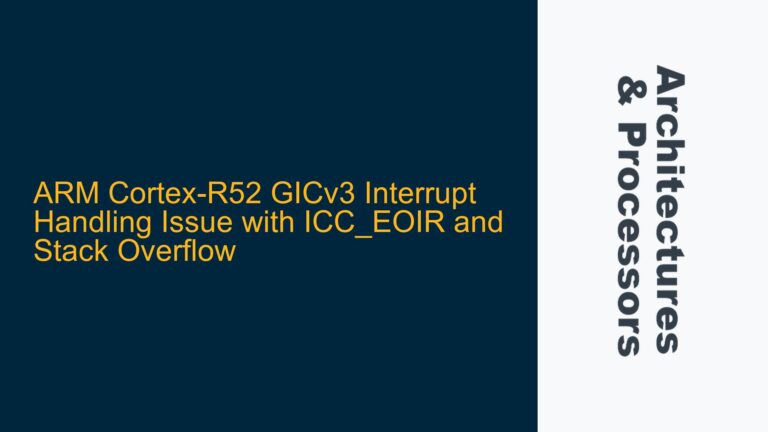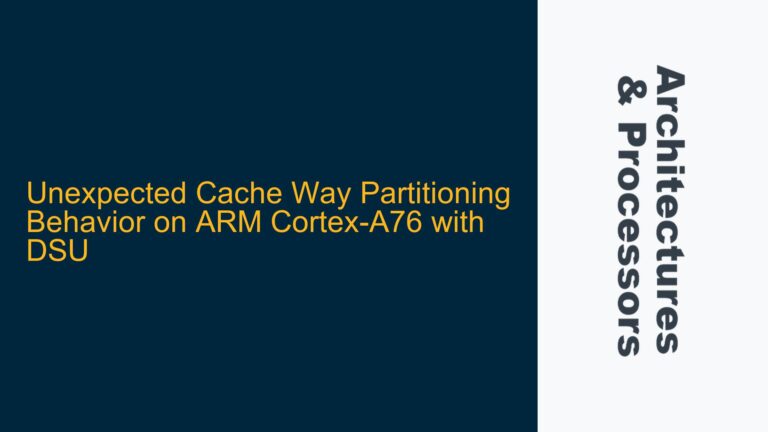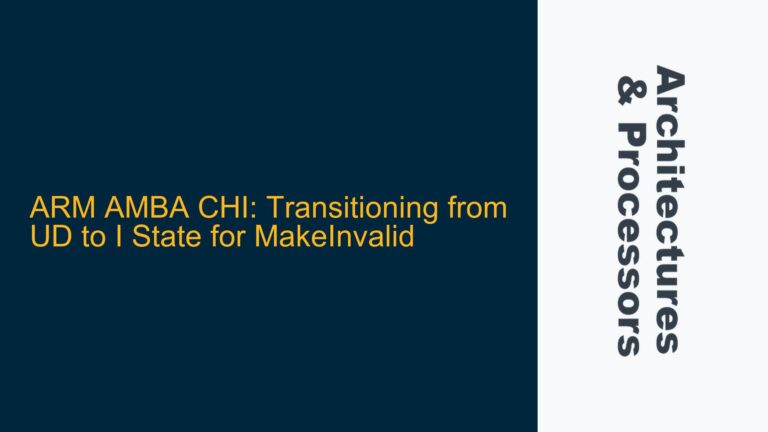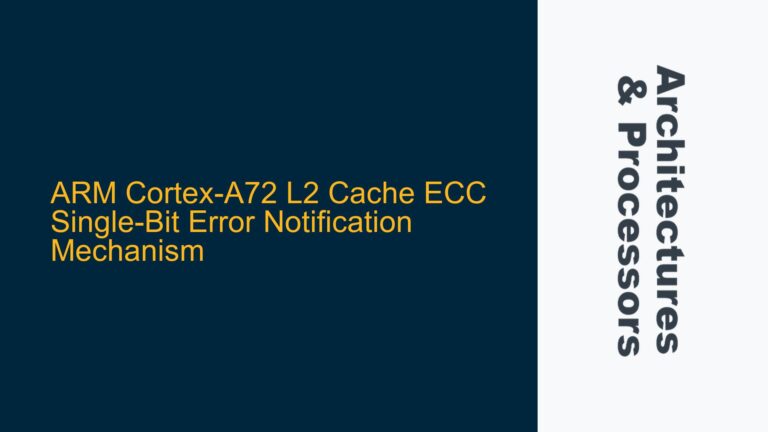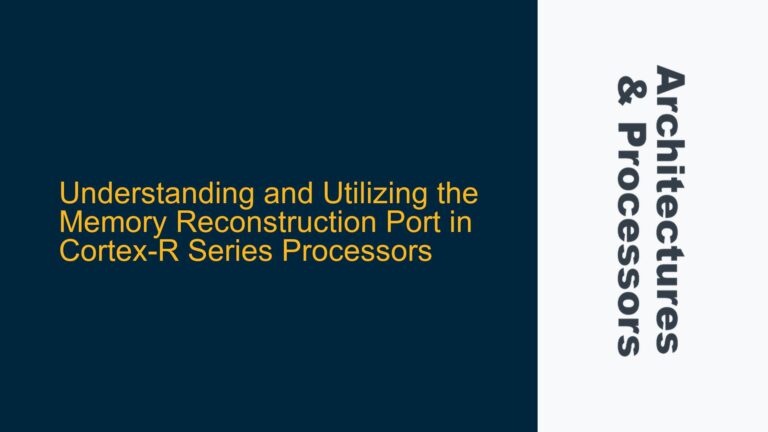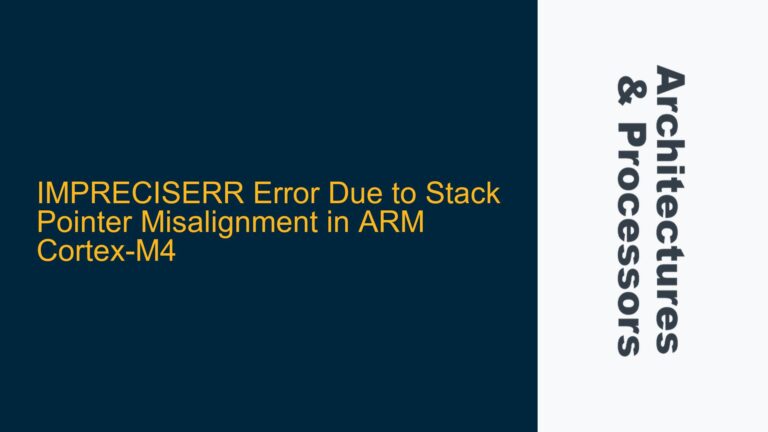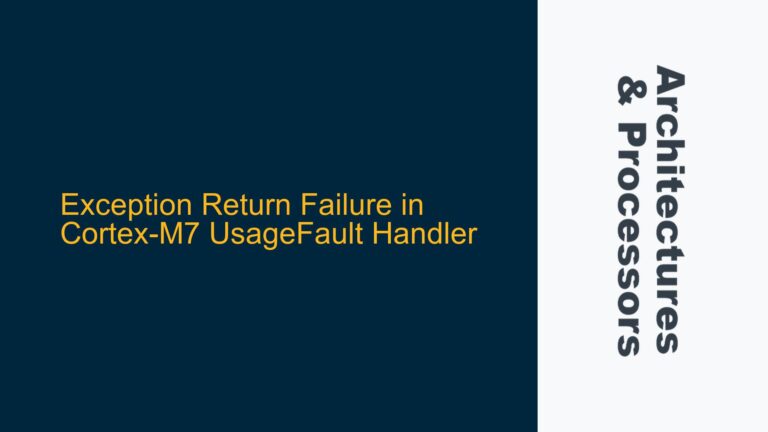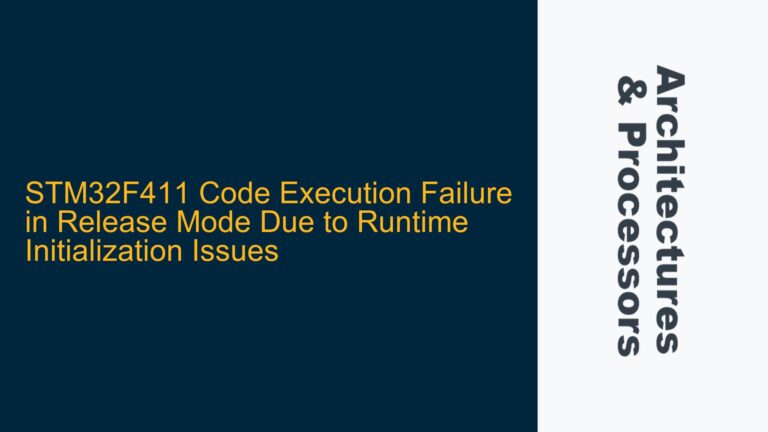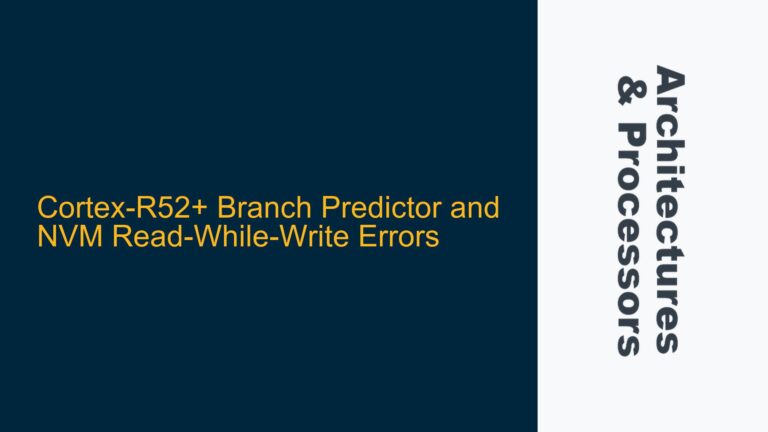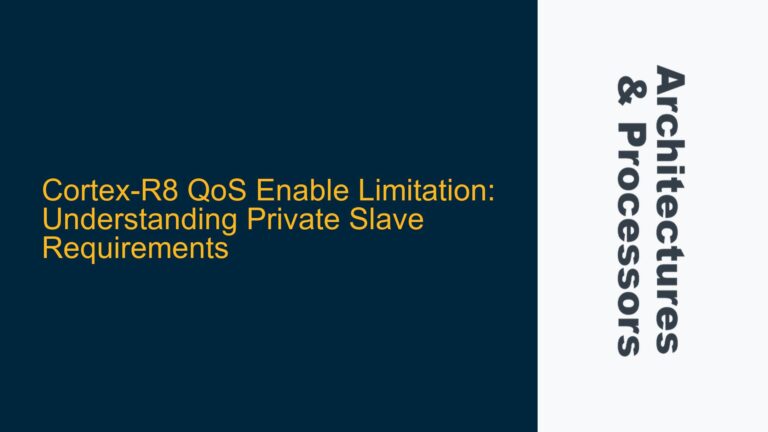ARM Cortex-R52 GICv3 Interrupt Handling Issue with ICC_EOIR and Stack Overflow
Cortex-R52 GICv3 Interrupt Handling Sequence and Stack Overflow The Cortex-R52 processor, when paired with a GICv3 interrupt controller, can experience a critical issue during interrupt handling where the processor fails to restore the context after handling an interrupt. This issue manifests when interrupts are triggered frequently, and the IRQ is unmasked before writing to the…
